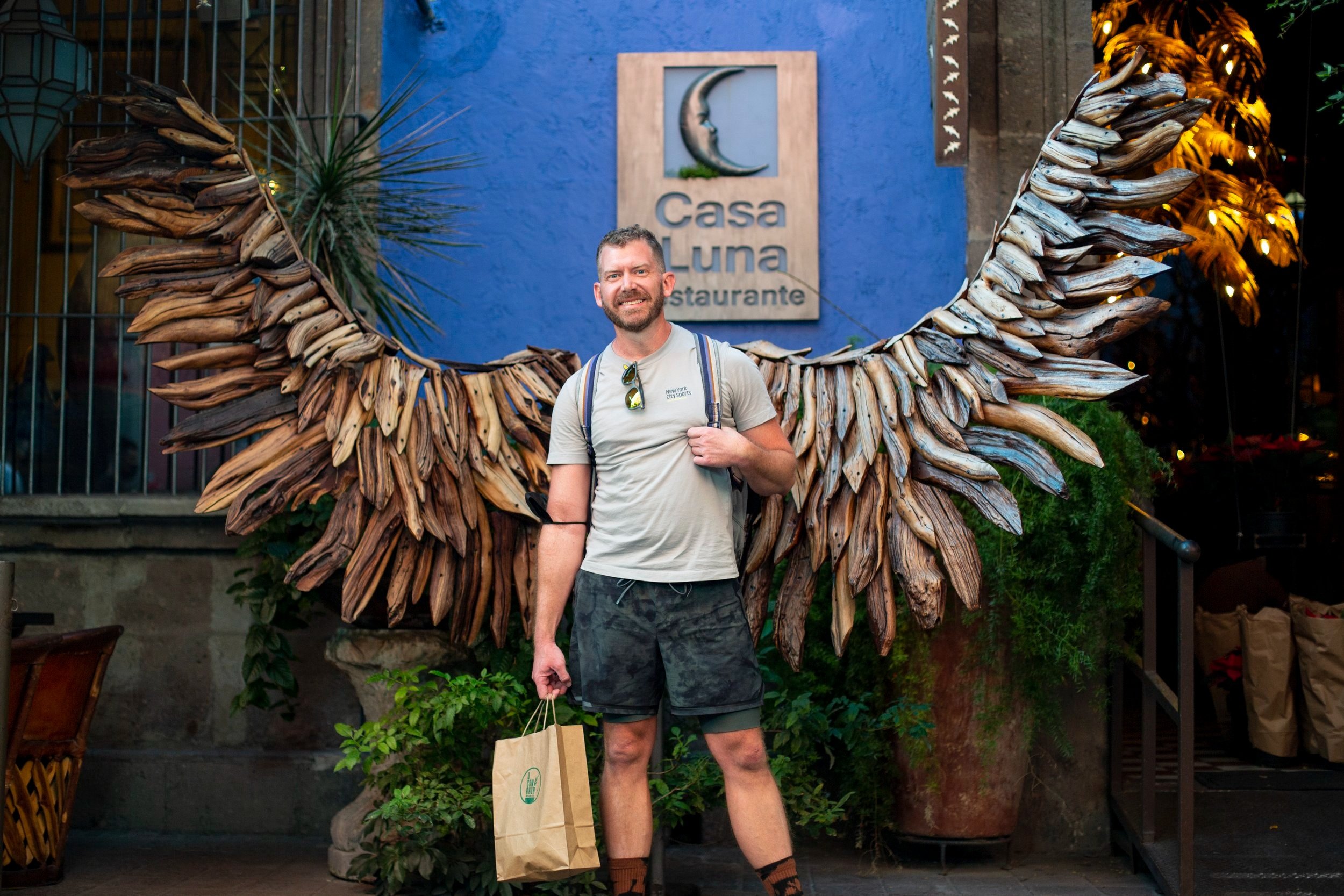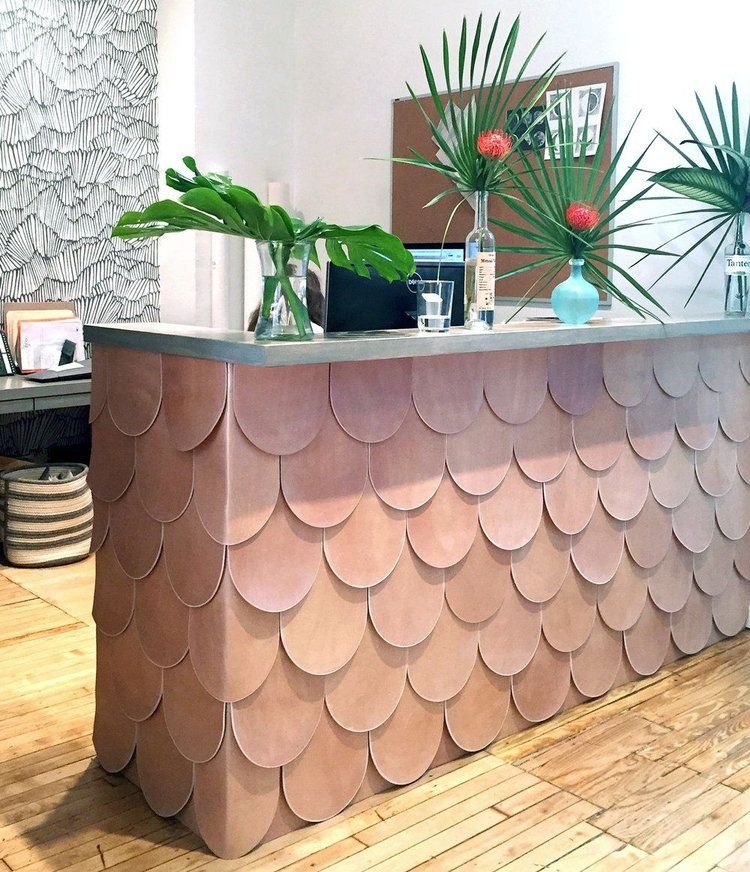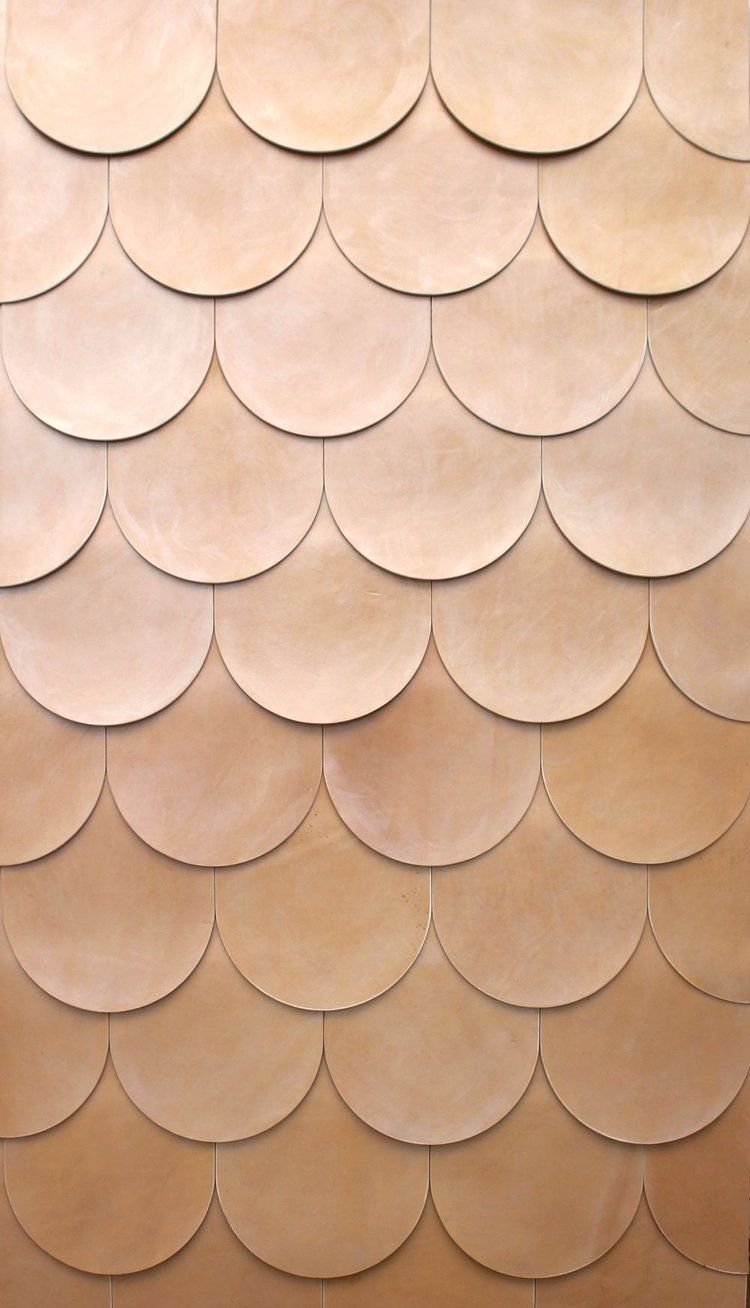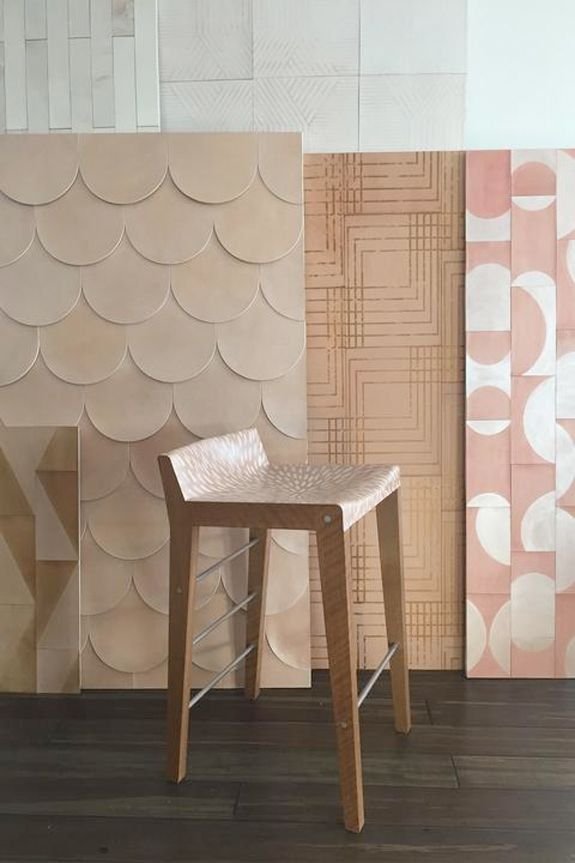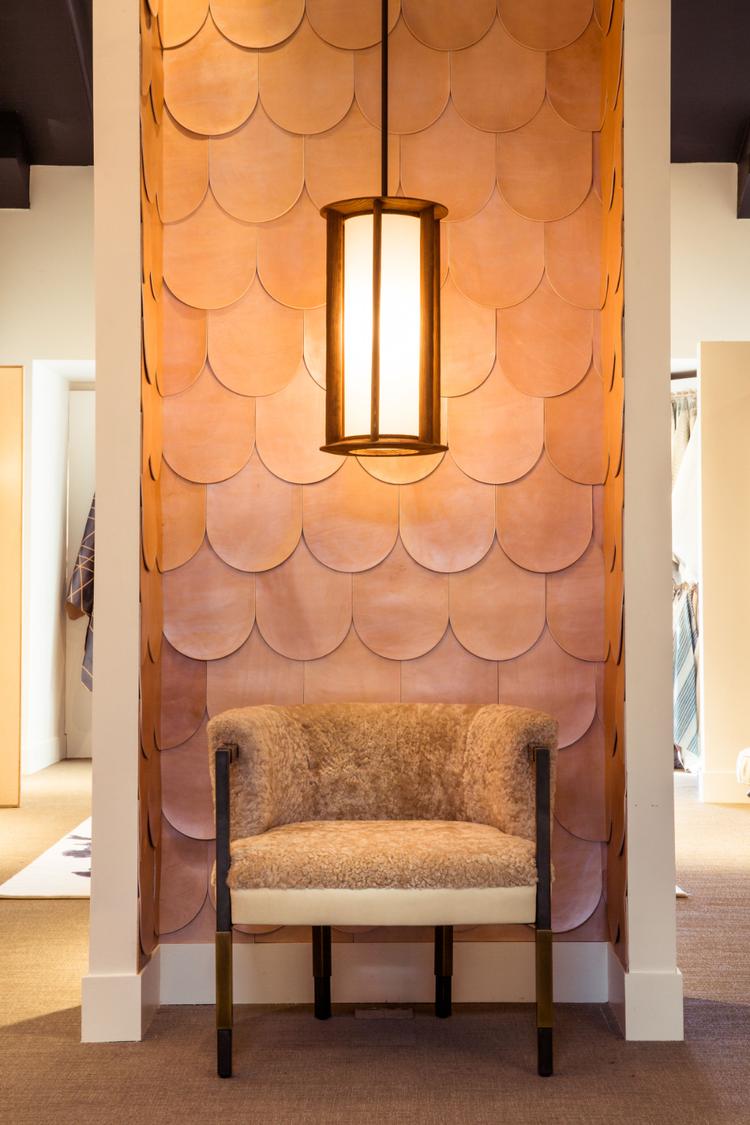When you obsess over design for design sake and research photos for your interior design trends and tendencias blog posts you fall down rabbit holes and occasionally come up for air with gold. This happened recently while researching our color trend blog for clay pink. I know we are a drapery manufacturing business but we, namely Forrest, has been doing a deep dive into interior design trends and loves to share his discoveries. He’s gone off the rails a bit, but…. These photos are where it all started.
Read more about some of our favorite interior design trends for 2023 and 2024 (link).
Azulejos de Piel
Originally written in Spanish by Indira
Es muy común saber que la piel natural es utilizada para crear muebles tapizados, pero lo que no todos saben es que la piel se puede hacer en azulejo. El azulejo de cuero ha aparecido repentinamente en el mercado, este tipo de mosaico consta de varias capas: consta de una base, respaldo suave y una cubierta de cuero frontal, estas se pueden hacer de una base de cartón especial, tablero de fibra o gres porcelánico.
La baldosa puede ser utilizada tanto en pared como en piso, su forma suele ser cuadrada, las medidas en las que se puede encontrar este tipo de mosaico pueden ser en las siguientes medidas 200 x 200, 300 x 300, 400 x 400, 500 x 500 mm. Pero hay fabricantes que este producto lo pueden ofrecer en formas hexagonales y octagonales, o paneles que se pliegan como si fueran un rompecabezas.
Existen dos tipos de azulejos, uno que se utiliza para pared y el otro es para el piso. la primera se le conoce como Baldosa de pared, esta, está hecha de materias primas ligeras, como son el cartón grueso y el tablero de alta densidad, esta puede utilizarse en paredes y en techo, la capa frontal puede ser lisa y monocromática, texturizada y coloreada, es decir, puede aparentar la piel de los reptiles.
Por otro lado encontramos el azulejo de cuero de piso, este se elabora de cerámica, solo se utiliza lo que es cuero bovino con un grosor de 3mm, este mosaico no es muy popular para las decoraciones, pero puedes encontrarlo en varias tonalidades con diferentes proveedores.
Cabe mencionar que este tipo de azulejo es un poco costoso por el tipo de material con lo que está hecho, pero si quieres darle un giro radical a tu hogar, valdrá la pena cada centavo.
Leather Tiles
Everyone knows that leather is often used to create upholstered furniture, but few people know is that leather can be made into tile. Leather tile has suddenly appeared on the market, this type of mosaic consists of several layers: it consists of a base, soft back and a front leather cover, these can be made of a special cardboard base, fiberboard or stoneware. porcelain.
The tile can be used both on the wall and on the floor, its shape is usually square, the sizes in which this type of mosaic can be found can be in the following sizes: 200 x 200, 300 x 300, 400 x 400, 500 x 500mm But there are manufacturers that can offer this product in hexagonal and octagonal shapes, or panels that fold like a puzzle.
There are two types of tiles, one is used for walls and the other is for floors. the first is known as wall tile, this is made of light raw materials, such as thick cardboard and high-density board, it can be used on walls and ceilings, the front layer can be smooth and monochrome, textured and colored, that is, it can look like the skin of reptiles.
On the other hand we find the leather floor tile, this is made of ceramic, only bovine leather with a thickness of 3mm is used, this mosaic is not very popular for decorations, but you can find it in various shades with different suppliers .
It is worth mentioning that this type of tile is a bit expensive for the type of material with which it is made, but if you want to give your home a radical change, it will be worth every penny.
